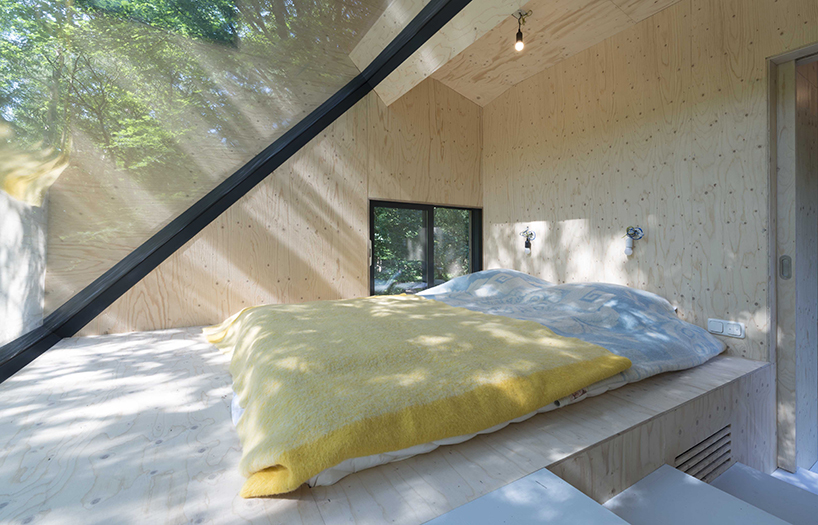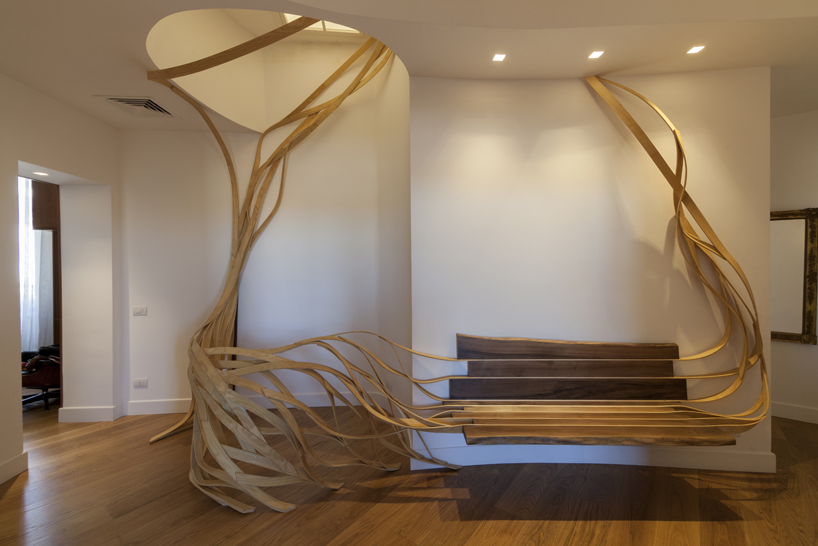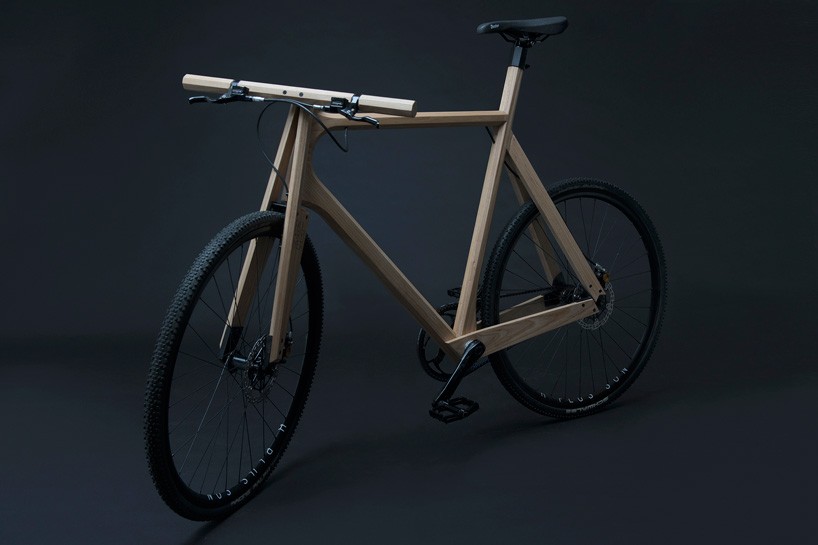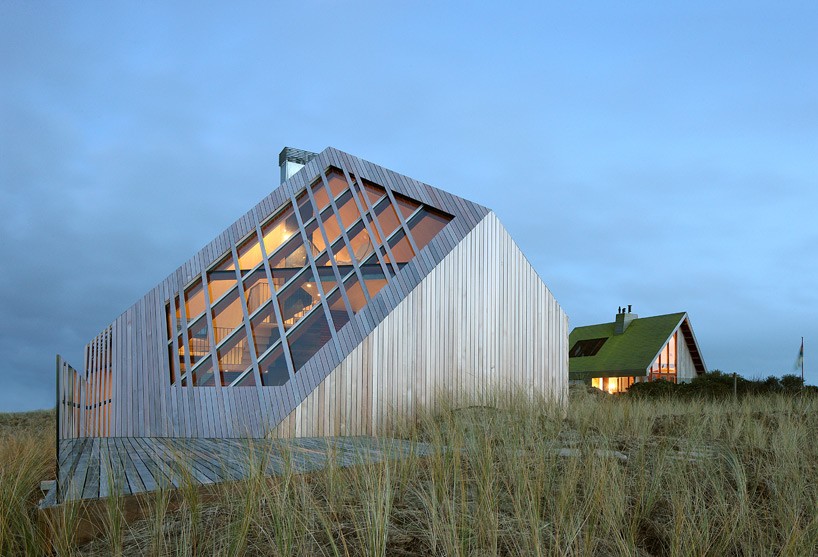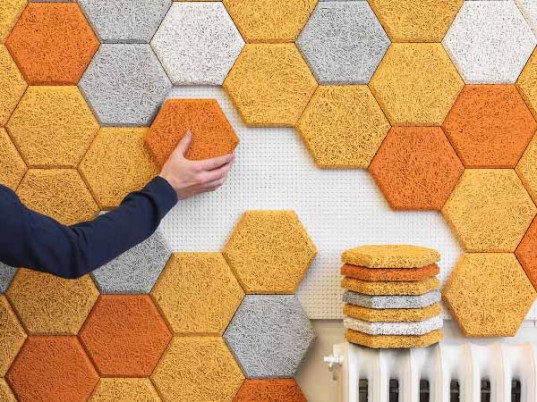A squat brick house built as a getaway in the 1950s felt too dark and small for its modern-day owners, who envisioned something bright and open that preserves the existing structure. In making these renovation dreams come true, part of the challenge for Dutch firm Bloot Architecture was hewing to local laws restricting residential building heights and requiring a certain slope in the roof.
The result is essentially a modular pod placed right on top of the original home’s roof, with a huge window angled toward the sky and the canopies of the trees in the surrounding forest. The addition sits low enough to follow the law, but the clever angles make it seem higher than it really is. Climb the stairs to the lofted bed that sits on a platform just beneath that window, and you’ll feel like you’re in a tree house.
This sustainable addition makes extensive use of pine throughout the interior, with flax insulation and an untreated larch cladding exterior. It adds two bedrooms to the home, as well as a storage landing, a new laundry room and access to the roof. All storage and bed bases are built-in.
Renovations also made this forest home entirely self-sufficient, with a new solar power system, wood stove for heat, and wastewater filtering system. Check out another cool modern wood addition.

